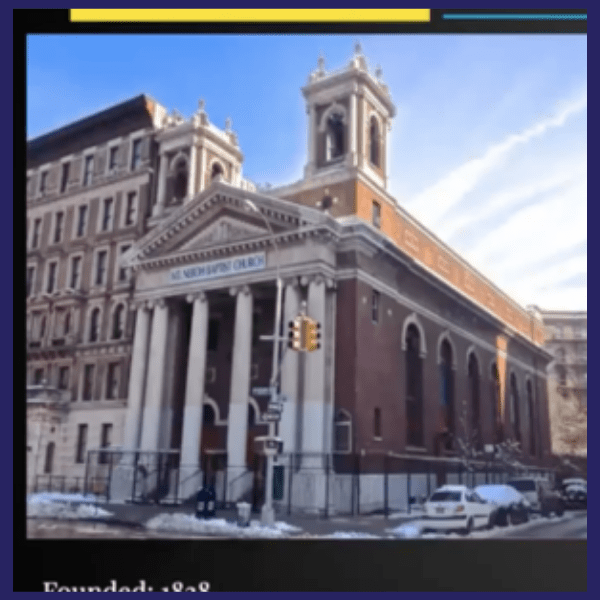From roughly 1870 to about 1930, Harlem, with roughly 175,000 Jewish residents at its peak, was the third-largest Jewish community on the planet Earth, after Manhattan's Lower East Side (over 500,000) and Warsaw, Poland (350,000). Indeed, for several generations, Harlem was home to a very diverse community of Jews “both rich and poor" that included Ashkenazim from both Central and Eastern Europe and Sephardim, most frequently from the Ottoman Empire.
Elegant Central Harlem, which was developed in the late 19th century with grand brownstone houses, centered on the greenery of Mount Morris Park created by the Central Park designers, Calvert Vaux and Frederick Law Olmsted. This neighborhood, which was originally restricted,would, by the turn of the 20th century, become the center of affluent Jewish Harlem, often German-Jews or alrightniks, Yiddish for Eastern European co-religionists who had become financially successful (often in an ostentatious manner). Likewise, because of the era when Harlem's development occurred, the neighborhood possesses some of the very first of the newly fashionable French-inspired apartment houses in the United States.
With the electrification of the Second Avenue Elevated Train in 1900 and the construction nearby of working-class tenements, East Harlem became essentially an extension of the poor and working-class community of the Jewish Lower East Side. The elevated train divided the Harlem communities, rich from poor. East Harlem was generally Orthodox Jewish and there often shtieblach or small storefront synagogues. Central Harlem's congregations were frequently Reform or what we might consider Conservative today. The synagogues of Central Harlem were often grand and majestic structures.
A surprising number of synagogue structures survive, having mostly been converted to well-maintained churches. The grand Reform synagogue of Temple Israel is now Mount Olivet Baptist Church. Other survivors include Mount Neboh Synagogue (now City Tabernacle Seventh Day Adventist Church) and the former Ansche Chesed (now Mount Neboh Baptist Church). For generations, Harlem was also home to a Black Jewish synagogue, The Commandment Keepers Ethiopian Hebrew Congregation.
The list of noted residents is near-endless from New York Times publisher Adolph Ochs to beloved writer Sholem Aleichem to Random House book publisher Bennett Cerf; from comedian Milton Berle and singer/performer Fanny Brice to the popular comedic team the Marx Brothers, to radio and television star, Gertrude Berg (Molly Goldberg); from Broadway composer Richard Rogers (who lived across the street from the world-renowned chazzan (cantor) Yossele Rosenblatt), to novelist Henry Roth, to Lena Himmelstein Bryant - the founder of the prominent clothing venue, Lane Bryant.
Religious leaders, such as Rabbi Herbert S. Goldstein, whose trendsetting, Institutional Synagogue (affectionately known as the shul with the pool), provided a lingering impact on Jewish cultural institutions today. Libraries, such as Harlem's beloved Aguilar Library and educational institutions, both religious such as the Uptown Talmud Torah, and secular, such as the renowned Weingart Institute (Home of American Musical Theatre, underscored the Jewish dedication to learning.
By the 1920s, as restrictions were lifted in other New York neighborhoods, such as the Upper West Side, Washington Heights, and the Grand Concourse in the Bronx, the Jewish communities of Harlem moved onward. Meanwhile, in the six decades that Harlem was a major Jewish community, the impact of the residents was tremendous. From Broadway Musical Theatre to Women's Rights; from Zionism to Fashion Design; from the American Stage to American Literature, the influence of Harlem's Jewish heritage remains with all of us, in countless ways, today.
Today, Jews are beginning to return to live in Harlem. Indicative of these changes include the creation, in 2016, of the Jewish Community Center (JCC) of Harlem and the non-sectarian NYC Charter School, Harlem Hebrew Language Academy, established in 2013.


